By Wendy Lemlin
It’s early morning in Eunice, Louisiana, and the kaleidoscope of colors and patterns on traditional patchwork costumes are a wake-up call for the eyes, as the throng of masked revelers of the Mardi Gras “courir” set out on horseback through the countryside. Musicians on flatbed trucks provide the accompanying soundtrack with accordions and fiddles, and the beer flows freely, even at this early hour. Reliving a custom harkening back to medieval France, the “Mardis Gras”, as they are called, raucously beg ingredients from homes and farms for a communal gumbo later that day. Their loose, colorfully fringed costumes conceal their identities and, in a carryover from those long ago days, parody the roles of those in authority in the France of centuries ago.
Many hours, beers and miles later, the procession will ride into the center of town in mid-afternoon, to join a celebration where the air is filled with music, the rhythm of dancing feet, and the aromas of such Cajun delicacies as boiled crawfish, boudin, and etouffee.
Meanwhile, in the nearby town of Iota, hundreds of people bedecked in beads and feather boas, traditional costumes or western wear, are jammed onto a platform raised about 10 feet above the main street, dancing joyously to the live Cajun and zydeco music. Soon a truck load of costumed children arrive and start their ceremonial begging, a custom also from olden days, welcoming the coins that onlookers press into their little hands.
In Lafayette, the King’s Parade, with its floats and grandeur, is festively making its way through downtown to the carnival at Cajun Field, as thousands of spectators, already weighted down with strands of colorful beads, line the parade route and scramble for even more beads and trinkets thrown from the floats.
Mention Mardi Gras to most people, and what comes to mind is the hedonistic whoop-ti-doo that has come to define New Orleans. Those in the know, however, would argue that
the genuine Mardi Gras in Louisiana is celebrated in the southwestern part of the state, in the area known as Acadiana, where the French-influenced Cajun and Creole cultures thrive in a zesty jambalaya of lively music, spicy food and centuries-old traditions.
From Lake Charles to Lafayette, Mardi Gras in Acadiana combines the glitz of galas and the pizzazz of parades with generational homecomings and rural traditions, and all are welcome to participate, visitor and local alike. Too festive to be confined to just one day, Mardi Gras is an entire season here, always beginning on January 6 (Twelfth Night), and culminating on Fat Tuesday itself, this year February 9, the day before the Catholic observance of Lent begins. In the days leading up to and including Mardi Gras, there is non-stop music and dancing everywhere, parades and balls, wreath-
shaped King Cake consumed by the ton, and every home, shop, and person is decorated in purple, green and gold, and covered in strands of Mardi Gras beads.
The epicenter of all the fun is Lafayette, where city and rural rites of celebration converge. Beginning on the Friday before Mardi Gras, there are daily parades, as well as Le Festival de Mardi Gras, including carnival rides, continuous high-energy music, dancing, and zesty traditional Cajun food. On Fat Tuesday, the Mardi Gras Show at Clark Field also celebrates the Creole and African American cultural festivities with music, food, dancers and fun, and the “Mardi Gras Indian” costumes seen there are truly a sight to behold–hand-beaded and abundantly plumed, they transform the honored wearers into fantastical feathered visions of chiefs and tribes.
Later that evening, all are invited to experience the pomp and splendor of Mardi Gras royalty at the Greater Southwest Louisiana Mardi Gras Ball and Pageant.
The common denominator of all this revelry is the music that provides a soundtrack to this area of southwestern Louisiana known as Acadiana, and it is the music rooted in the traditions of the 18th century French Acadian settlers from Nova Scotia, whose descendents came to be known as Cajuns. It is the lively music of the bayou: Creole zydeco, Cajun two-steps, and country waltzes. It is the sound of fiddles, the tempo of rubboards, the percussion of foot stomping dancers, and always, the lively accordion that figures front and center at any musical gathering.
The music takes the slow drawl of southern life— the sultry bayou nights, the scent of magnolia blossoms and crawfish dinners– and infuses it with an abundance of swing and spice in an uptempo joie de vivre. The looser sister to Cajun music, zydeco cranks it up a notch with more funk in the beat and more swivel in the dancers’ hips. Both zydeco and Cajun music are made for dancing, for celebrating life. In Acadiana, where even the children become multi-instrumentalists, Cajun and zydeco music always surrounds you, and never more so than during Mardi Gras season.
No longer just a regional phenomenon, a love of zydeco and Cajun music has spread nationwide in recent years, and Mardi Gras season draws thousands of dance aficionados from all over the US to fill the dance floors and festival stages in Lafayette and its environs.
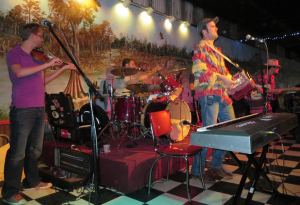
Cajun music band The Pine Leaf Boys at Pat’s Atchafalaya Club on the Sunday before Mardi Gras. Credit: Wendy Lemlin
Clubs like the Blue Moon Saloon, The Feed and Seed, El Sido’s, Artmosphere, and Randol’s in Lafayette, or Whiskey River Landing and Pat’s Atchafalya Club in Henderson are full to overflowing, the big dance barn at Lakeview RV Park in Eunice is filled with musicians, dancers and on-lookers, and on Saturday morning the line to get into the legendary Zydeco Breakfast at Café Des Amis in Breaux Bridge will stretch around the block by 7:30—yes, that’s AM!
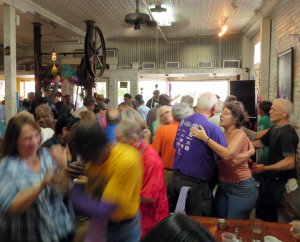
Dancers jam the tiny dancefloor at the Zydeco Breakfast at Cafe Des Amis in Breaux Bridge. Credit: Wendy Lemlin
If you really want to thoroughly experience Mardi Gras in southwest Louisiana, you’d best bring your dancing boots along!
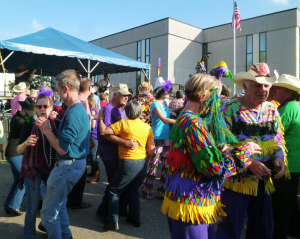
On Mardi Gras afternoon,, a crowd of locals and visitors dance to the music of Steve Riley and the Mamou Playboys.
For a listing of all the parades, dancing and links to events in Southwest Louisiana, check out the following websites:
Official Tourism Site of Louisiana: www.louisianatravel.com/mardi-gras
Lafayette Convention & Visitor’s Commission: www.lafayettetravel.com/MardiGras

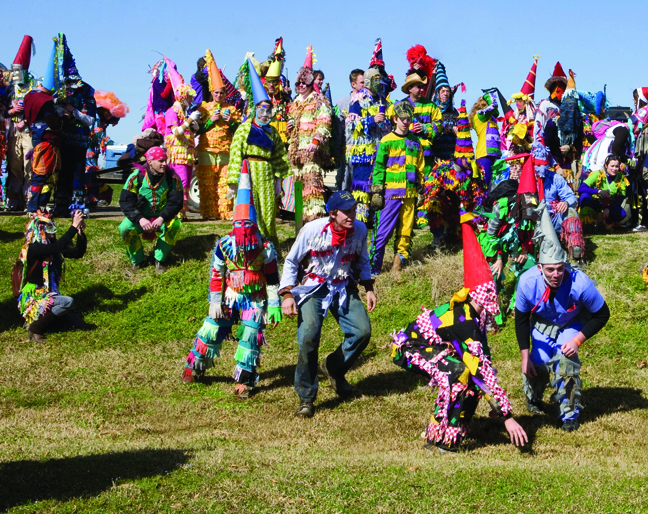
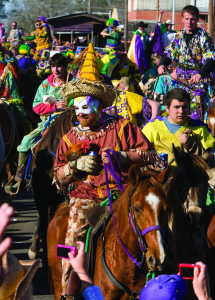
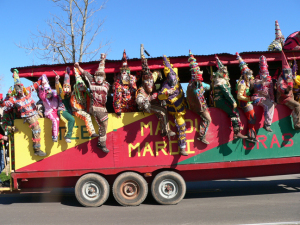
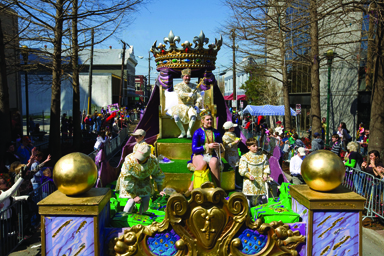
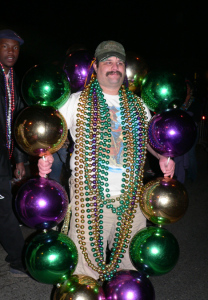
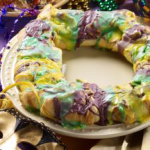
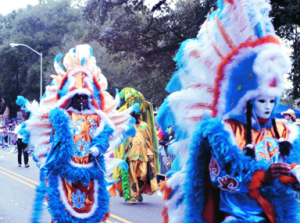
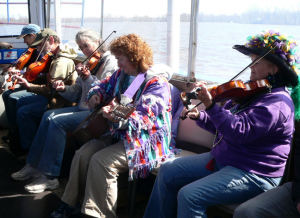
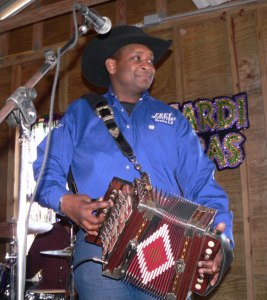
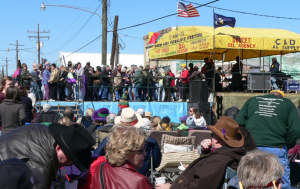
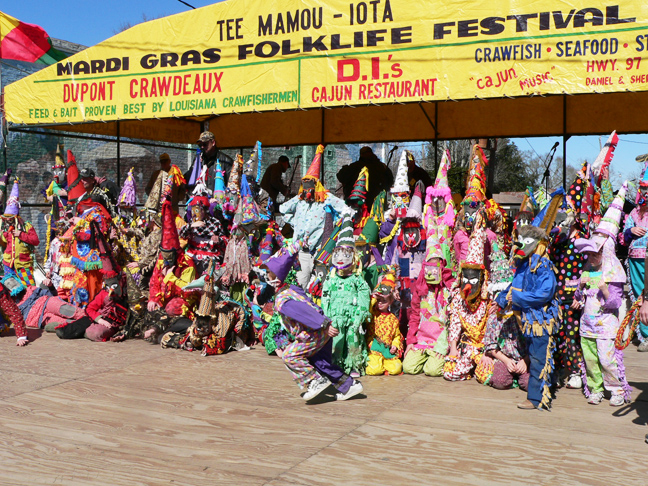
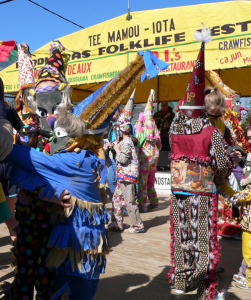
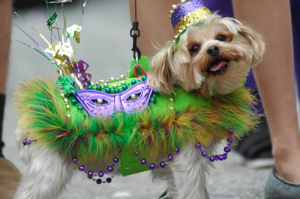
Pingback: Bringing Mardi Gras to the Rest of The World
Pingback: Bringing Mardi Gras to the Rest of The World